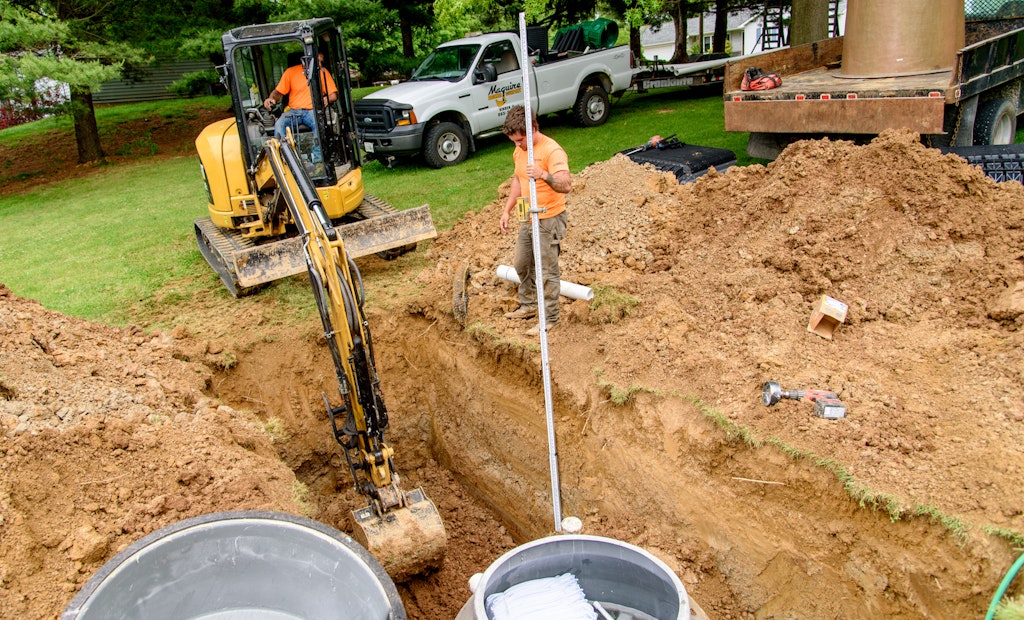Most onsite professionals want to grow their business. Sure, you may not want to grow in exactly the same way as the next installer, but some form of expansion is likely on your mind.
Some want to expand by adding employees; others want to remain the same size and grow into greater revenue and profitability; others want to simply solve the challenges that prevent them from finding the balance they want to achieve in life.
You want to grow. Problem is, many installers aren’t sure how and so the “wish” never becomes “reality.” Rather than grow by design, business owners end up allowing their companies to evolve by default — the unintentional victim of customer requests, employee hassles and economic pressures.
Here’s a simple six-step path to follow to improve your ability to grow by design. No advanced business degree necessary.
Step 1. Pick an area to grow.
It starts with being specific. What do you want to grow? Yes, you want to grow your business, but that is too vague. Narrow it down. Do you want to grow revenue? Profit? Number of employees? Number of trucks? Service area? Number of customers? Average ticket?
Pick a few areas that are related, but try not to do too many. Realize that there might be spinoffs as well: Instead of focusing only on growing your number of trucks, you’ll probably want to focus on growing the number of employees, which will force you to increase the number of trucks.
Step 2. What should it look like?
Next, decide what this area should look like at the end of the year. Don’t just think something like “I want more employees,” because not all employees are created equally. Another example: You could double your customer base overnight, but they may not be the type of customers you want to have.
Instead think very specifically about what the ideal version of that growth area looks like. Happy, loyal customers who spend a specific amount? Hard-working “A-player” employees who show up on time? Double-digit profit from fewer services? It’s up to you, but you need to know exactly what you want.
Step 3. Create steps.
Change occurs over time and rarely happens all at once, so create steps to follow that take you down the path of growth you’ve established. If you want to add 12 new employees in a year, that’s one a month. Even if you ultimately end up hiring two in one month and none in another month, at least you know what you should be averaging. Therefore, in this example, you need to build the steps required to hire one employee each month.
Think about what actions are required to complete that step. Is there marketing that needs to be done? What resources are required? Are there others you can delegate some of the work to? How long does each step take so that you know when you have to start?
Step 4. Create metrics.
Look at each step you have to take (or that you are delegating to someone else) and figure out how to measure it. How do you know when it’s done and that you can cross it off your list?
If you want to grow, you need to measure the actions you take and the results of those actions to ensure progress. Over time, those actions and results add up to the growth you want to achieve. Track your progress with real numbers so you can course-correct regularly.
Step 5. Get help.
Stop trying to figure it out on your own. Get help. This might be something as simple as reading more articles in a trade magazine, reading a book on the topic or heading to YouTube for some educational videos. Or it might mean investing in a mentor, coach or trainer who can help you understand what you need to do.
Many septic pumpers are hands-on, DIY people, so this is probably how you learn everything. Problem is, trying to figure it out yourself can be time-consuming, costly and error-prone. That’s not how you want to grow your business. If your results will have a positive impact on your business, then it’s worth making an investment of time and money to learn the right way to do something from someone who has the experience of doing it before.
Step 6. Assess, course-correct and keep going.
Continually assess your progress by looking at the steps you outlined and watching your results. Course-correct as needed to keep yourself on track. Yes, it may mean adjusting the steps you need to take as you realize you’re not hitting goals like you thought you would.
Most important, keep going because some of the best results don’t appear right away but rather take time to show up after you’ve diligently built up a foundation of successful actions.
About the Author: Mike Agugliaro is a Business Warrior on a mission to change the lives and companies of service business owners. Agugliaro and his business partner started and grew a struggling home services company into a multimillion-dollar empire before selling the company in 2017. Today, Agugliaro is an author, speaker and mentor. He's the co-founder of CEO Warrior, a high level coaching and training organization for home services businesses. Learn more at www.ceowarrior.com.






